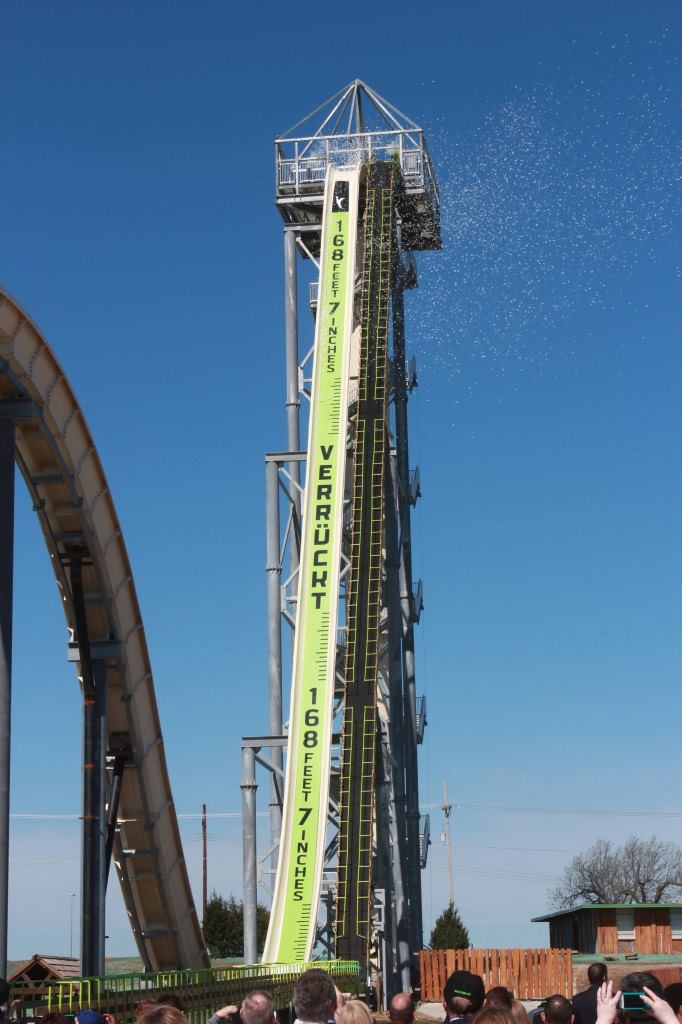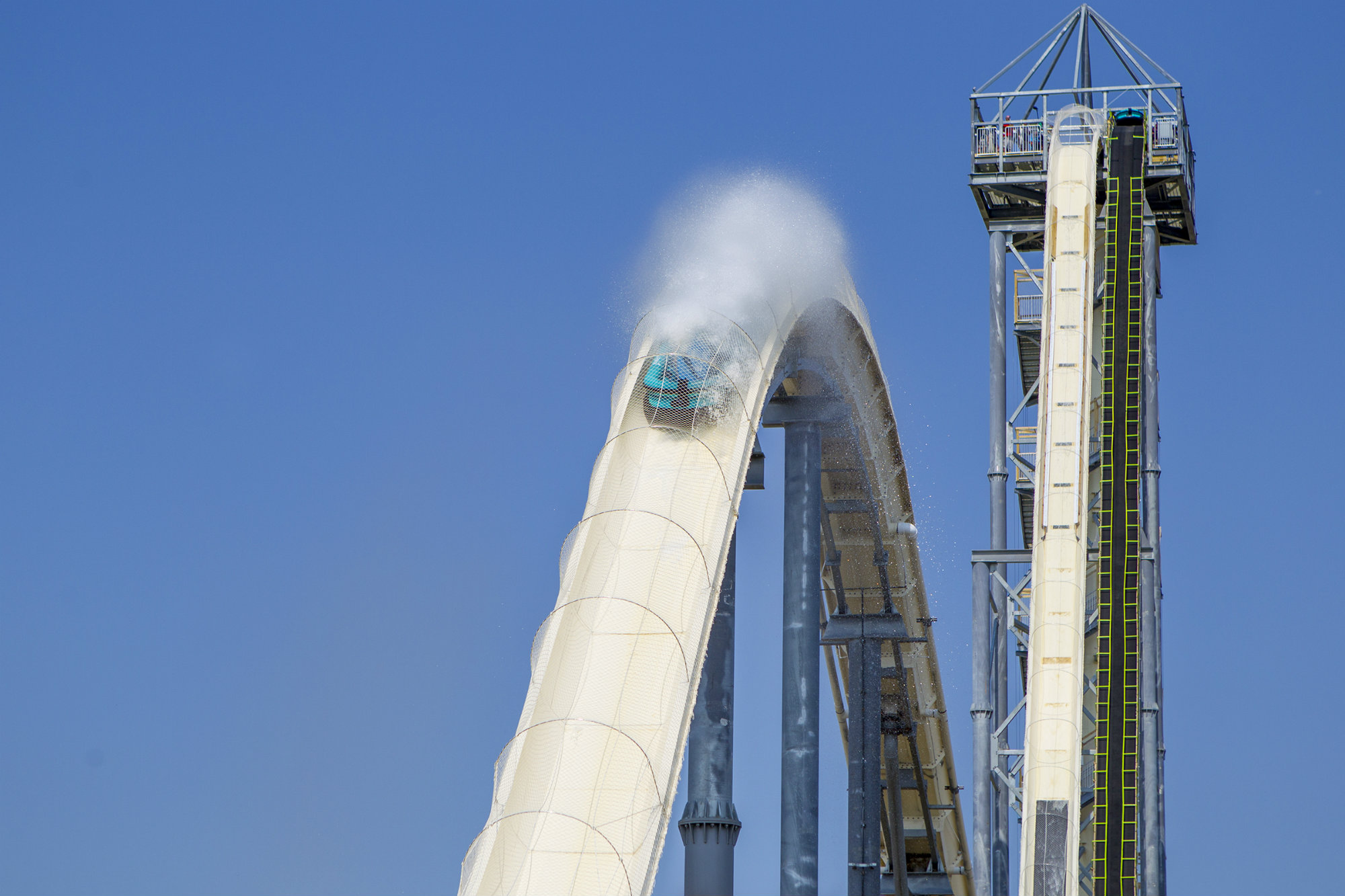The accusations waged against three defendants arrested in connection with a child’s death on the world’s largest waterslide range from neglect to purposeful hiding of information.

In 2016, 10-year-old Caleb Schwab was decapitated on Verruckt, which stood 167 feet tall and was registered as the world’s tallest waterslide. Court records say that the raft, containing the child and two women, went airborne, and the child made contact with overhead hoops and netting placed above the slide for safety.
In March 23, three Schlitterbahn executives were arrested, accused of causing the tragedy. Schlitterbahn Co-owner Jeff Henry and a designer named John Schooley were charged with second-degree murder, aggravated battery and aggravated endangering of a child. Tyler Austin Miles, former director of operations at Schlitterbahn Kansas City, was arrested for involuntary manslaughter, among other charges.
Schlitterbahn quickly and unequivocally denied all charges in the media.
All three had to surrender themselves from out of state and have been released on bail. According to Kansas City media outlets, Henry went back home to Texas upon his release and, within 24 hours was charged with threatening individuals he claimed had ransacked his property.
Henry and Schooley were named as the court as designers, explaining the more serious charges.
The most damning of the accusations involved negligent design.
“The death of [Caleb Schwab] appeared at first to be an isolated and unforeseeable incident until whistleblowers from within Schlitterbahn’s own ranks came forward and revealed that Schlitterbahn officials had covered up similar incidents in the past,” the indictment filed in court said.
The document also said the waterslide violated most safety standards. “… Verruckt’s designers and operators knew that Verruckt posed a substantial and unjustifiable risk of death or severe bodily harm,” the document said.
The State of Kansas, which filed the case against the three defendants, said that Henry and Schooley failed to put their initial designs through a process called dynamic or geometric engineering. This involves calculating the physics of the ride path, measuring such factors as weight, distance, velocity, momentum, gravitational force, centripetal force, friction and others. This is especially important on experimental rides, the document said, and should take place before structural engineering.
While the state said it found plenty of evidence to show that structural engineering took place, it found no documentation of dynamic engineering. Further, the state said Henry and Schooley did not have the technical expertise to design a ride like Verruckt and instead relied on “crude trial-and-error methods” in place of the calculations. Where such a process would normally take three to six months before construction of a prototype, the state said, Verruckt’s prototype was complete within 36 days of Henry’s idea for the waterslide.
The state accused the team of rushing the job. As evidence, it quoted an email from a steel detailer, who said, “I’ll be honest with you. We were forced to ship this [tower platform] way too early. There are still so many unknowns.”
He said that not everything was figured out ahead of time so, for instance, the tower would have to be galvanized on-site rather than in the plant. “Instead of dealing with these questions in a controlled environment, where we have the material and resources to resolve these matters,” he is quoted as saying, “it is going to have to be done on the fly 160 feet in the air…”
Late, the state said, initial tests showed some rafts going airborne. When word got around, the state added, the design team responded by denying the problem and conducting tests at night, under cover of darkness.
One week before Verruckt opened, the state claims, an outside engineering firm performed accelerometer testing of the rafts, with data suggesting that weight ranges of 400 to 550 pounds had a high chance of going airborne at the crest of the ride’s second peak.
As the team prepared for the grand opening, the state said, it considered imposing an age limit. An outside consultant suggested that riders should be 16 or older. However, the designers decided to allow riders 14 years and older, and printed signs saying as much, court documents say. The night before the opening, the state goes on to say, the team changed its mind, covered the age restriction language on its signage with stickers, and removed the age restriction.
The state claims a number of design defects. It says that water blasters meant to boost a raft’s speed as it climbed the second hill were not reliable and did not customize the thrust to the weight contained in the raft at any given time. Further, it said the designers didn’t know if the rafts could properly absorb the thrust. The filed indictment also says the rafts were designed without a commonly used safety mechanism, called and upstop, meant to prevent airborne rafts.
Restraints were made from hook-and-loop fabric (known by the brand name Velcro), which goes against ASTM standards, the state said. In addition, these restraints were not analyzed for their effectiveness and were defective and improperly maintained. Rides such as Verruckt generally necessitate rigid overhead shoulder bars with a locking lap restraint, it goes on to say.
Henry and Schooley were called especially careless for their placement of netting and support hoops above the slide, given that testing showed some rafts to go airborne. ASTM states that designers should eliminate any physical obstruction with which a human could make contact, the indictment said. If the designers knew rafts could go airborne, the state further stated, then placing the metal bars that make up a part of the hoops and netting configuration above the slide went against standard. It claims that riders were told not to raise their arms or wear GoPro cameras on the tops of their heads for fear they would make contact with the overhead components.
“The presence of the overhead netting and support hoops speaks volumes about the designers’ extreme disregard for the value of human life,” the indictment said.
After the ride opened to the public, court documents say, a consultant submitted a report to Henry saying that the waterslide was unfinished and unsafe. “Henry obviously ignored the report, because Verruckt remained in operation,” the state said.



